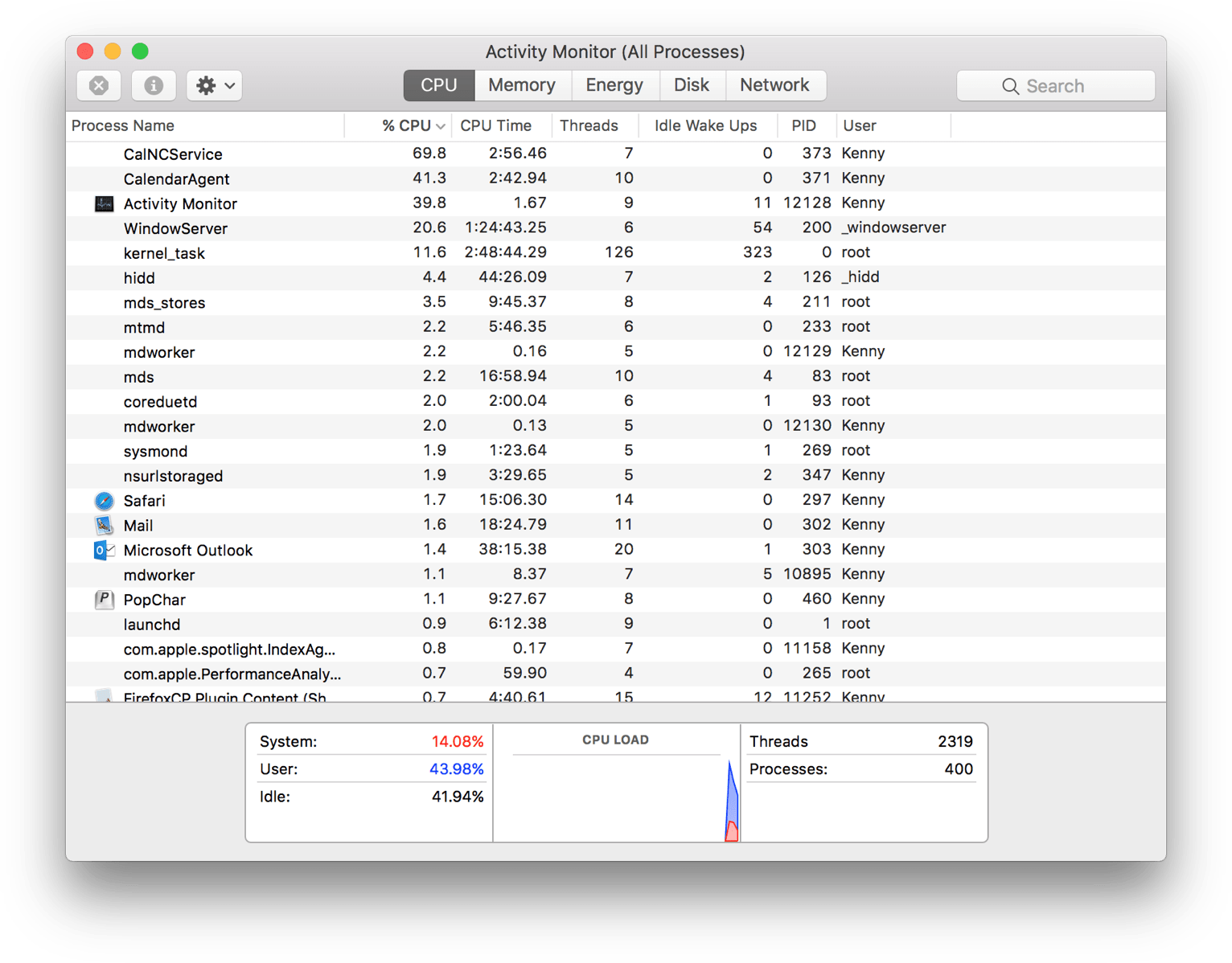


To identify them, click the % CPU column header to sort the process list by CPU power. But if you’re near or at 100%, you’ll want to hunt for rogue processes. As long as the sum of those numbers stays under 100% most of the time, you’re probably fine. For now, we’ll focus on the CPU view that’s the default, but if you were trying to figure out why your MacBook Pro’s battery was draining so quickly, you’d look in the Energy view.Īt the bottom of the CPU view is a graph of CPU load, and numbers that correspond to how much of that load comes from the system and how much from the user (apps you’ve launched). Those views show the impact each process has on those aspects of the Mac. Notice the buttons at the top of Activity Monitor that provide access to different views: CPU, Memory, Energy, Disk, and Network. However, some apps use multiple processes, and macOS itself relies on a ton of processes too. In many cases, a process is the same as what you think of as an app, so you’ll see processes for apps like Mail and Safari. Open that to find and double-click Activity Monitor.Īctivity Monitor can seem daunting because it lists every “process” running on your Mac. Open your Applications folder and scroll down until you see the Utilities folder. The key is a utility app called Activity Monitor that Apple bundles with every Mac. Here’s how to figure out if that’s the problem. But you might just have a rogue app that’s hogging your Mac’s CPU.
#MACBOOK PRO ACTIVITY MONITOR HOW TO OPEN MAC#
Does it seem like your Mac is running slowly? It’s always possible that you need more RAM, a speedy SSD to replace a slow hard drive, or even a new Mac.


 0 kommentar(er)
0 kommentar(er)
